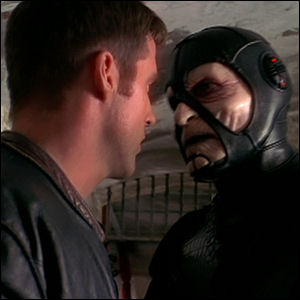 The first night of the miniseries Farscape: Peacekeeper Wars airs on the Sci-Fi Channel, starring Ben Browder and Claudia Black, and providing (by massive fan demand) an epilogue to the cancelled series.
The first night of the miniseries Farscape: Peacekeeper Wars airs on the Sci-Fi Channel, starring Ben Browder and Claudia Black, and providing (by massive fan demand) an epilogue to the cancelled series. ![]()

Earl Green is the creator, curator, and head writer of theLogBook.com.
 The first night of the miniseries Farscape: Peacekeeper Wars airs on the Sci-Fi Channel, starring Ben Browder and Claudia Black, and providing (by massive fan demand) an epilogue to the cancelled series.
The first night of the miniseries Farscape: Peacekeeper Wars airs on the Sci-Fi Channel, starring Ben Browder and Claudia Black, and providing (by massive fan demand) an epilogue to the cancelled series. ![]()
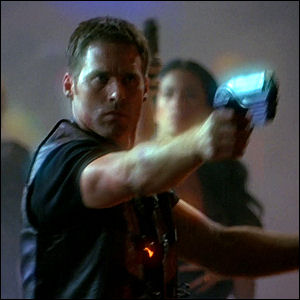 The second night of the miniseries Farscape: Peacekeeper Wars airs on the Sci-Fi Channel, starring Ben Browder and Claudia Black, and providing (by massive fan demand) an epilogue to the cancelled series. This serves as the series finale.
The second night of the miniseries Farscape: Peacekeeper Wars airs on the Sci-Fi Channel, starring Ben Browder and Claudia Black, and providing (by massive fan demand) an epilogue to the cancelled series. This serves as the series finale. ![]()
 The 17th episode of the radio science fiction comedy series The Hitchhiker’s Guide To The Galaxy is broadcast on BBC Radio, continuing Dirk Maggs’ adaptation of Douglas Adams’ novel Life, The Universe, And Everything with most of the original radio cast.
The 17th episode of the radio science fiction comedy series The Hitchhiker’s Guide To The Galaxy is broadcast on BBC Radio, continuing Dirk Maggs’ adaptation of Douglas Adams’ novel Life, The Universe, And Everything with most of the original radio cast. ![]()
 The Jason Falkner five-song CD EP Bliss Descending is released.
The Jason Falkner five-song CD EP Bliss Descending is released. ![]()
 British satellite channel Sky One premieres the first episode of Ronald D. Moore’s re-imagining of Battlestar Galactica, months ahead of the first season premiere in North America on the Sci-Fi Channel. The remainder of the season airs first in the UK due to Sky One’s financial contribution to the production of the series (without which it’s unlikely that Sci-Fi Channel alone would’ve continued production).
British satellite channel Sky One premieres the first episode of Ronald D. Moore’s re-imagining of Battlestar Galactica, months ahead of the first season premiere in North America on the Sci-Fi Channel. The remainder of the season airs first in the UK due to Sky One’s financial contribution to the production of the series (without which it’s unlikely that Sci-Fi Channel alone would’ve continued production). ![]()
 Bandai Entertainment releases Yoko Kanno‘s album Be Human, the soundtrack to the anime Ghost In The Shell: Stand Alone Complex.
Bandai Entertainment releases Yoko Kanno‘s album Be Human, the soundtrack to the anime Ghost In The Shell: Stand Alone Complex. ![]()
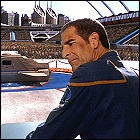 The 78th episode of the prequel spinoff Star Trek: Enterprise airs on UPN.
The 78th episode of the prequel spinoff Star Trek: Enterprise airs on UPN. ![]()
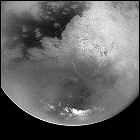 In its first close flyby of Saturn’s largest moon, the unmanned Cassini probe performs the first-ever radar reconaissance of Titan’s surface. Shrouded by a thick, organically-rich atmosphere, Titan’s surface has never been seen until now. Though scientists say that Cassini’s close pass only allows them to map 1% of the surface, the preliminary results prove to be fascinating. Titan seems, at first glance, to have a relatively smooth surface, perhaps indicating oceans, or ongoing glacial or volcanic resurfacing; a member of the radar imaging team says that readings have also indicated that the surface of Titan is “covered in organics.” Cassini will get further chances to aim its radar beams at Titan, and in December it will release the European Space Agency’s Huygens probe, which will approach Titan, ultimately entering the moon’s dense atmosphere in January to take direct readings from the surface, whether it’s solid or liquid.
In its first close flyby of Saturn’s largest moon, the unmanned Cassini probe performs the first-ever radar reconaissance of Titan’s surface. Shrouded by a thick, organically-rich atmosphere, Titan’s surface has never been seen until now. Though scientists say that Cassini’s close pass only allows them to map 1% of the surface, the preliminary results prove to be fascinating. Titan seems, at first glance, to have a relatively smooth surface, perhaps indicating oceans, or ongoing glacial or volcanic resurfacing; a member of the radar imaging team says that readings have also indicated that the surface of Titan is “covered in organics.” Cassini will get further chances to aim its radar beams at Titan, and in December it will release the European Space Agency’s Huygens probe, which will approach Titan, ultimately entering the moon’s dense atmosphere in January to take direct readings from the surface, whether it’s solid or liquid.
 The 18th episode of the radio science fiction comedy series The Hitchhiker’s Guide To The Galaxy is broadcast on BBC Radio, concluding Dirk Maggs’ adaptation of Douglas Adams’ novel Life, The Universe, And Everything with most of the original radio cast. A radio version of the fourth novel, So Long, And Thanks For All The Fish, will follow in 2005.
The 18th episode of the radio science fiction comedy series The Hitchhiker’s Guide To The Galaxy is broadcast on BBC Radio, concluding Dirk Maggs’ adaptation of Douglas Adams’ novel Life, The Universe, And Everything with most of the original radio cast. A radio version of the fourth novel, So Long, And Thanks For All The Fish, will follow in 2005. ![]()
 Gil Melle, the composer who created the sound of several seminal ’70s supernatural series, dies at the age of 72. He was responsible for the main title music of such shows as Kolchak: The Night Stalker and Rod Serling’s Night Gallery, as well as scores for individual episodes of shows like Kolchak, Columbo and The Six Million Dollar Man. On the big screen, he created the memorably abstract electronic soundtrack for The Andromeda Strain, and he was also consistently employed to write music for TV movies, including Gene Roddenberry’s pilot movie The Questor Tapes.
Gil Melle, the composer who created the sound of several seminal ’70s supernatural series, dies at the age of 72. He was responsible for the main title music of such shows as Kolchak: The Night Stalker and Rod Serling’s Night Gallery, as well as scores for individual episodes of shows like Kolchak, Columbo and The Six Million Dollar Man. On the big screen, he created the memorably abstract electronic soundtrack for The Andromeda Strain, and he was also consistently employed to write music for TV movies, including Gene Roddenberry’s pilot movie The Questor Tapes.
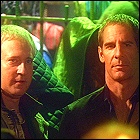 The 79th episode of the prequel spinoff Star Trek: Enterprise airs on UPN. Brent Spiner (Star Trek: The Next Generation, Star Trek: Picard) guest stars.
The 79th episode of the prequel spinoff Star Trek: Enterprise airs on UPN. Brent Spiner (Star Trek: The Next Generation, Star Trek: Picard) guest stars. ![]()
 Big Finish Productions releases the 62nd Doctor Who audio drama in its main monthly range, starring Paul McGann and India Fisher.
Big Finish Productions releases the 62nd Doctor Who audio drama in its main monthly range, starring Paul McGann and India Fisher. ![]()
 Big Finish Productions releases the 14th Dalek Empire audio drama, a Doctor Who audio spinoff starring David Tennant and William Gaunt.
Big Finish Productions releases the 14th Dalek Empire audio drama, a Doctor Who audio spinoff starring David Tennant and William Gaunt. ![]()
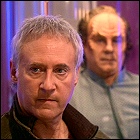 The 80th episode of the prequel spinoff Star Trek: Enterprise airs on UPN. Brent Spiner (Star Trek: The Next Generation, Star Trek: Picard) guest stars.
The 80th episode of the prequel spinoff Star Trek: Enterprise airs on UPN. Brent Spiner (Star Trek: The Next Generation, Star Trek: Picard) guest stars. ![]()
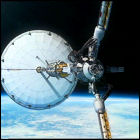 BBC1 airs the first half of the two-night event miniseries Space Odyssey: Voyage To The Planets, written and directed by Joe Ahearne. Chronicling a fictional multiplanetary mission through Earth’s solar system by an international astronaut crew, the series also slips factual information to the audience via a “reality show” format. This show will get a later U.S. airdate on the Discovery Channel.
BBC1 airs the first half of the two-night event miniseries Space Odyssey: Voyage To The Planets, written and directed by Joe Ahearne. Chronicling a fictional multiplanetary mission through Earth’s solar system by an international astronaut crew, the series also slips factual information to the audience via a “reality show” format. This show will get a later U.S. airdate on the Discovery Channel. ![]()
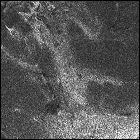 A billion miles from the sun, you don’t need molten lava for volcanoes – you just need subsurface ice to warm up and erupt as water. That’s what NASA scientists think they’ve spotted in a radar image of the surface of Saturn’s moon Titan sent back in late October by the Cassini unmanned probe. A bright, flow-like feature may be indicative of something oozing out onto Titan’s surface from below – and at the frigid temperatures experienced in Saturn’s orbit, ice volcanoes are more likely than the molten rock variety seen on Earth and Mars. If confirmed, this wouldn’t be the first “ice volcano” found in our solar system; Voyager 2 had already spotted an eruption on the surface of Neptune’s largest moon, Triton, as it swung by in August 1989.
A billion miles from the sun, you don’t need molten lava for volcanoes – you just need subsurface ice to warm up and erupt as water. That’s what NASA scientists think they’ve spotted in a radar image of the surface of Saturn’s moon Titan sent back in late October by the Cassini unmanned probe. A bright, flow-like feature may be indicative of something oozing out onto Titan’s surface from below – and at the frigid temperatures experienced in Saturn’s orbit, ice volcanoes are more likely than the molten rock variety seen on Earth and Mars. If confirmed, this wouldn’t be the first “ice volcano” found in our solar system; Voyager 2 had already spotted an eruption on the surface of Neptune’s largest moon, Triton, as it swung by in August 1989.
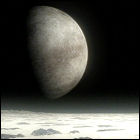 BBC1 airs the second half of the two-night event miniseries Space Odyssey: Voyage To The Planets, written and directed by Joe Ahearne. Chronicling a fictional multiplanetary mission through Earth’s solar system by an international astronaut crew, the series also slips factual information to the audience via a “reality show” format. This show will get a later U.S. airdate on the Discovery Channel.
BBC1 airs the second half of the two-night event miniseries Space Odyssey: Voyage To The Planets, written and directed by Joe Ahearne. Chronicling a fictional multiplanetary mission through Earth’s solar system by an international astronaut crew, the series also slips factual information to the audience via a “reality show” format. This show will get a later U.S. airdate on the Discovery Channel. ![]()
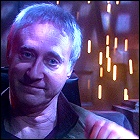 The 81st episode of the prequel spinoff Star Trek: Enterprise airs on UPN. Brent Spiner (Star Trek: The Next Generation, Star Trek: Picard) guest stars.
The 81st episode of the prequel spinoff Star Trek: Enterprise airs on UPN. Brent Spiner (Star Trek: The Next Generation, Star Trek: Picard) guest stars. ![]()
 The 82nd episode of the prequel spinoff Star Trek: Enterprise airs on UPN. Robert Foxworth (The Questor Tapes) guest stars.
The 82nd episode of the prequel spinoff Star Trek: Enterprise airs on UPN. Robert Foxworth (The Questor Tapes) guest stars. ![]()
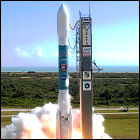 NASA successfully launches the Swift unmanned deep space observatory after a small delay. Carrying three different instrument packages, Swift’s mission is specifically to observe, categorize and study the aftereffects of gamma ray bursts. The satellite is designed to aim itself at any such bursts that it detects within mere seconds so it can catch the short-lived aftereffects and relay its findings to ground controllers. It is believed that some of the bursts are caused by the dying collapse of stars, and possibly the formation of black holes, and as such may be some of the most powerful energy releases known in nature. Swift is expected to observe as many as 100 gamma ray bursts per year.
NASA successfully launches the Swift unmanned deep space observatory after a small delay. Carrying three different instrument packages, Swift’s mission is specifically to observe, categorize and study the aftereffects of gamma ray bursts. The satellite is designed to aim itself at any such bursts that it detects within mere seconds so it can catch the short-lived aftereffects and relay its findings to ground controllers. It is believed that some of the bursts are caused by the dying collapse of stars, and possibly the formation of black holes, and as such may be some of the most powerful energy releases known in nature. Swift is expected to observe as many as 100 gamma ray bursts per year.
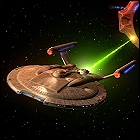 The 83rd episode of the prequel spinoff Star Trek: Enterprise airs on UPN. Joanna Cassidy (Blade Runner) and Robert Foxworth (The Questor Tapes) guest star.
The 83rd episode of the prequel spinoff Star Trek: Enterprise airs on UPN. Joanna Cassidy (Blade Runner) and Robert Foxworth (The Questor Tapes) guest star. ![]()
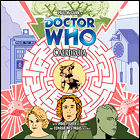 Big Finish Productions releases the 63rd Doctor Who audio drama in its main monthly range, starring Paul McGann and India Fisher.
Big Finish Productions releases the 63rd Doctor Who audio drama in its main monthly range, starring Paul McGann and India Fisher. ![]()
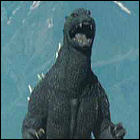 Toho releases the 28th Godzilla movie, Godzilla: Final Wars.
Toho releases the 28th Godzilla movie, Godzilla: Final Wars. ![]()
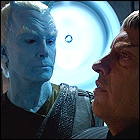 The 84th episode of the prequel spinoff Star Trek: Enterprise airs on UPN. Jeffrey Combs and Robert Foxworth (The Questor Tapes) guest star.
The 84th episode of the prequel spinoff Star Trek: Enterprise airs on UPN. Jeffrey Combs and Robert Foxworth (The Questor Tapes) guest star. ![]()
 Berkley Books publishes the non-fiction book Sojourner by Andrew Mishkin, a first-hand account of the design, construction, launch and operation of the first successful Mars rover.
Berkley Books publishes the non-fiction book Sojourner by Andrew Mishkin, a first-hand account of the design, construction, launch and operation of the first successful Mars rover. ![]()
 The “MC Hawking” album A Brief History Of Rhyme is released.
The “MC Hawking” album A Brief History Of Rhyme is released. ![]()
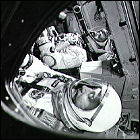 A veteran of the Gemini, Apollo and shuttle programs, 74-year-old astronaut John Young retires from NASA, capping off a 42-year career with the space agency. Young joined NASA in 1962 after hearing President Kennedy’s historic directive to launch a manned mission to the moon, and only three years later Young flew with Mercury veteran Gus Grissom on Gemini 3, the first manned two-person NASA mission. Young commanded Gemini 10 in 1966, was the command module pilot for the moon-orbiting Apollo 10 mission, and in 1972, Young commanded Apollo 16, landing in the moon’s mountainous Descartes region. Young commanded the first space shuttle mission, the maiden flight of Columbia in 1981, and commanded the ninth shuttle flight in 1983. Young had also served as the Chief Astronaut, determining crew assignments and making personnel decisions. In the wake of the Challenger disaster in 1986, Young became one of NASA’s most outspoken critics, and was reassigned to the position of special assistant for engineering, operations and safety – a move he regarded as a political one.
A veteran of the Gemini, Apollo and shuttle programs, 74-year-old astronaut John Young retires from NASA, capping off a 42-year career with the space agency. Young joined NASA in 1962 after hearing President Kennedy’s historic directive to launch a manned mission to the moon, and only three years later Young flew with Mercury veteran Gus Grissom on Gemini 3, the first manned two-person NASA mission. Young commanded Gemini 10 in 1966, was the command module pilot for the moon-orbiting Apollo 10 mission, and in 1972, Young commanded Apollo 16, landing in the moon’s mountainous Descartes region. Young commanded the first space shuttle mission, the maiden flight of Columbia in 1981, and commanded the ninth shuttle flight in 1983. Young had also served as the Chief Astronaut, determining crew assignments and making personnel decisions. In the wake of the Challenger disaster in 1986, Young became one of NASA’s most outspoken critics, and was reassigned to the position of special assistant for engineering, operations and safety – a move he regarded as a political one.
 Big Finish releases a free CD with two audio dramas, one of them a stand-alone Bernice Summerfield adventure and the other a prelude to the upcoming UNIT audio series featuring Nicholas Courtney as the Brigadier, attached to the cover of Doctor Who Magazine issue #351. Both audio stories are later made available on the Big Finish website.
Big Finish releases a free CD with two audio dramas, one of them a stand-alone Bernice Summerfield adventure and the other a prelude to the upcoming UNIT audio series featuring Nicholas Courtney as the Brigadier, attached to the cover of Doctor Who Magazine issue #351. Both audio stories are later made available on the Big Finish website. ![]()
 Big Finish releases a free CD with two audio dramas, one of them a prelude to the upcoming UNIT audio series and the other a stand-alone Bernice Summerfield adventure featuring the Cybermen, attached to the cover of Doctor Who Magazine issue #351. Both audio stories are later made available on the Big Finish website.
Big Finish releases a free CD with two audio dramas, one of them a prelude to the upcoming UNIT audio series and the other a stand-alone Bernice Summerfield adventure featuring the Cybermen, attached to the cover of Doctor Who Magazine issue #351. Both audio stories are later made available on the Big Finish website. ![]()